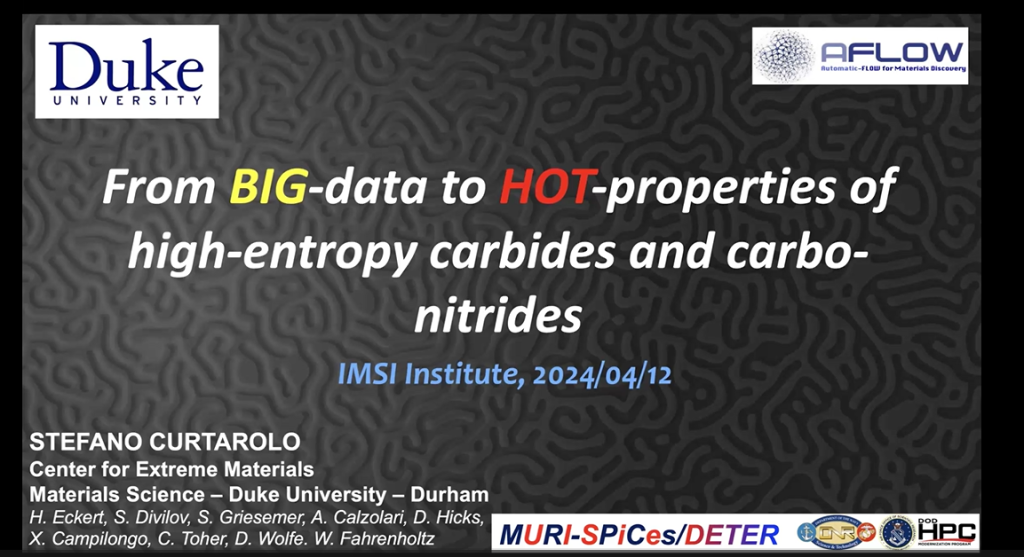From data to the extreme properties of ultra-high-temperature ceramics
Presenter
March 12, 2024
Event: 41722
Abstract
Disordered multicomponent systems - occupying the mostly uncharted centers of phase diagrams - have been studied for the last two decades for their potential revolutionary properties [1]. Very resilient compositions can be stabilized by maximizing entropy (configurational and/or vibrational) of (near) equimolar mixtures [2]. The search for new systems is mostly performed with trial-and-error techniques, as effective computational discovery is challenged by the immense number of configurations [3]: the synthesizability of high-entropy ceramics is typically assessed using ideal entropy along with the formation enthalpies from density functional theory, with simplified descriptors [4,5,6] or machine learning methods [7]. With respect to vibrations — even if they may have significant impact on phase stability — their contributions are drastically approximated to reduce the high computational cost, or often avoided with the hope of them being negligible, due to the technical difficulties posed in calculating them for disordered systems [8]. In this presentation I will address many of the problems in the discovery of disordered systems, offer some data-based effective solutions, and discuss the avenues opened by the latter, especially for plasmonic-hyperbolic applications [9]. [1] Nat. Rev. Mater. 5, 295 (2020); [2] Nat. Comms 6, 8485 (2015); [3] npj Comput. Mater. 5, 69 (2019); [4] Nat. Comms 9, 4980 (2018); [5] Acta Mater. 159, 364 (2018); [6] Nature 625, 66 (2024); [7] Nat. Rev. Mater. 6, 730 (2021); [8] Nat. Comms 12, 5747 (2021). [9] Nat. Comms 13, 5993 (2022).
